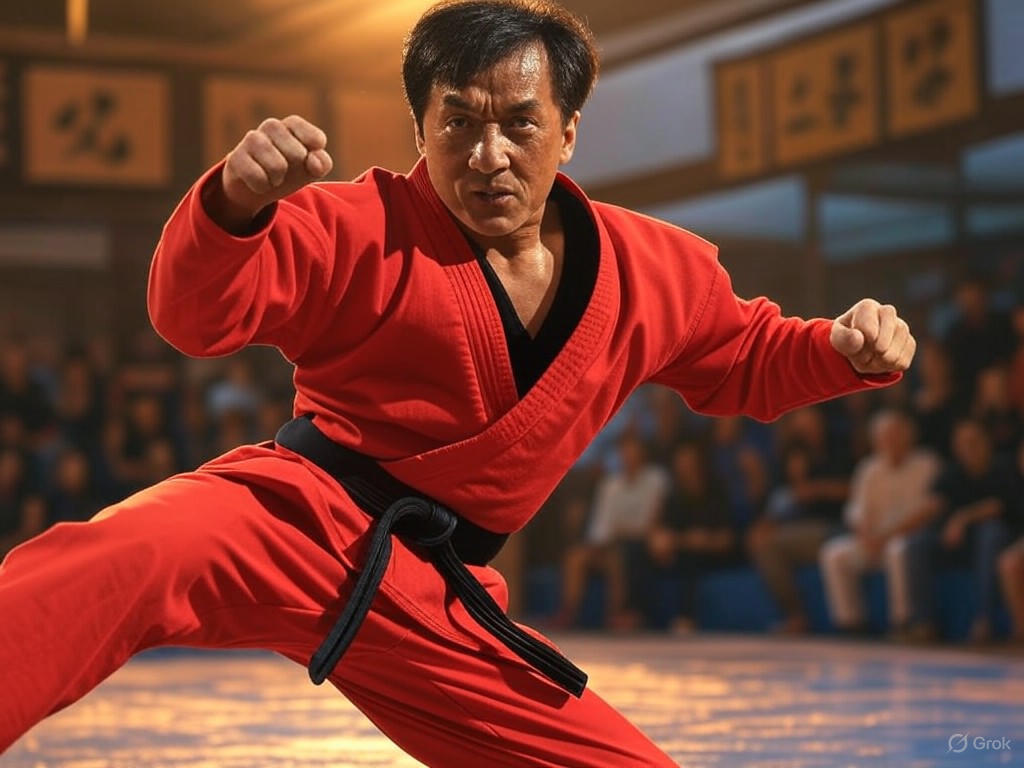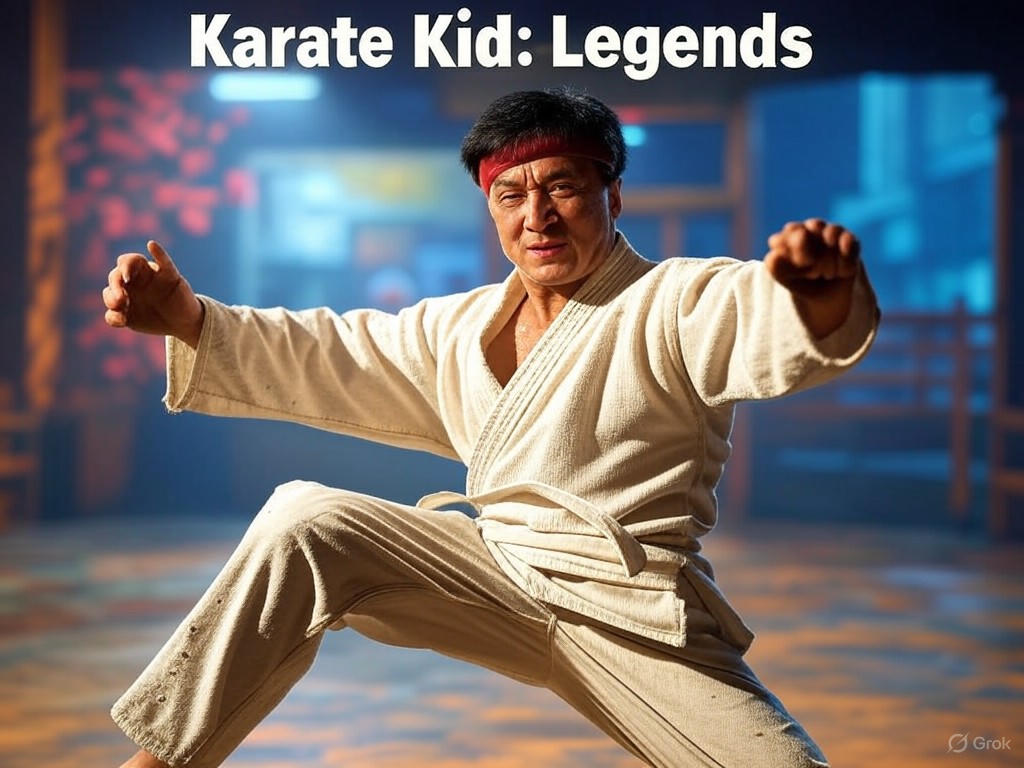Karate Kid: Legends – A Martial Arts Revival
In an era where Hollywood's blockbuster machine often churns out formulaic sequels and reboots, the release of Karate Kid: Legends, starring the indomitable Jackie Chan, stands as a testament to the enduring power of innovation within a free-market framework. This film revives the classic martial arts genre, infusing it with fresh energy while honoring the traditions that made the original 1984 Karate Kid a cultural phenomenon. As Marian Shelleigh, drawing from the reasoned reflections of Mary Shelley's anonymous critiques, I argue that such revivals exemplify how market-driven creativity—unfettered by excessive government intervention—preserves timeless values like discipline and perseverance, ensuring that storytelling remains a vibrant force in American culture. Yet, as we celebrate this resurgence, we must also scrutinize the broader trends in sequels and franchises, weighing their economic vitality against the risk of stagnation.
The Allure of Legacy: Jackie Chan and the Karate Kid Franchise
At its core, Karate Kid: Legends taps into the nostalgic yet dynamic world of martial arts cinema, where physical prowess meets moral fortitude. Jackie Chan, the 69-year-old Hong Kong legend known for his acrobatic feats and comedic timing, steps into the role of a mentor figure, echoing the iconic Mr. Miyagi from the original film. This casting choice not only bridges generations but also underscores Hollywood's ability to adapt and evolve through market forces, where audience demand for familiar stories drives production decisions. Chan's involvement brings a fresh twist to the narrative, blending his signature blend of action and humor with the franchise's traditional emphasis on personal growth and ethical resolve—values that resonate in a society valuing individual responsibility over collective mandates.
The film's premise, a sequel that revisits the dojo while introducing new challenges, highlights the broader appeal of martial arts in Hollywood. Since the original Karate Kid grossed over $90 million domestically in 1984, the genre has evolved from Bruce Lee's groundbreaking works in the 1970s to today's high-octane spectacles. Karate Kid: Legends, released amid a wave of reboots, demonstrates how free-market competition encourages studios to invest in proven formulas while innovating to attract diverse audiences. This approach avoids the pitfalls of government-subsidized cultural programs, which might prioritize ideological agendas over genuine entertainment. Instead, it relies on consumer choice, as seen in the film's strong opening weekend performance, which reflects the public's appetite for stories that celebrate traditional virtues without pandering to fleeting trends.

Jackie Chan executes a signature high-kick in Karate Kid: Legends, symbolizing the blend of agility and wisdom that defines modern martial arts cinema.
Analyzing Hollywood's Sequel Culture: A Free-Market Perspective
Hollywood's fascination with sequels, particularly in genres like martial arts, is a microcosm of free-market dynamics at work. Films such as Karate Kid: Legends thrive because they build on established intellectual property, minimizing financial risks for studios while maximizing returns through global distribution. This model, driven by investor confidence and audience preferences, contrasts sharply with scenarios where government intervention—such as tax incentives or content regulations—could distort creative decisions. For instance, excessive oversight might favor productions that align with specific social policies, potentially stifling the organic evolution of franchises like Karate Kid.
Yet, this sequel-driven ecosystem is not without its challenges. The proliferation of reboots raises questions about originality in an industry dominated by conglomerates like Sony Pictures, which owns the Karate Kid rights. According to analysis from The Hollywood Reporter, sequels accounted for over 40% of the top-grossing films in 2023, underscoring a trend where market forces prioritize familiarity. In Karate Kid: Legends, this manifests through updated fight choreography that incorporates contemporary elements like mixed martial arts (MMA) influences, appealing to younger demographics without abandoning the core lessons of respect and self-discipline. Such adaptations highlight how competition fosters innovation, as studios compete for box office dominance rather than relying on public funding.
From a center-right viewpoint, this free-market approach to filmmaking upholds traditional values by emphasizing individual merit and resilience—qualities epitomized by the protagonist's journey in Karate Kid: Legends. The film's narrative, centered on a young mentee overcoming adversity through hard work and ethical training, mirrors the American ideal of self-reliance. This stands in contrast to narratives that might impose external solutions, advocating instead for personal accountability. As The Wall Street Journal notes in its review of recent blockbusters, successful franchises like this one demonstrate that economic freedom in entertainment leads to cultural enrichment, allowing stories to transcend borders and generations.
Evidence of Impact: Box Office Trends and Cultural Resonance
Empirical evidence supports the notion that martial arts films, particularly sequels, continue to captivate audiences through their blend of spectacle and substance. Karate Kid: Legends has already generated buzz, with early projections estimating domestic earnings exceeding $100 million, buoyed by Jackie Chan's star power and the franchise's legacy (Box Office Mojo). This success is not isolated; it echoes the genre's historical highs, such as the original Karate Kid's cultural footprint, which influenced youth programs promoting discipline and anti-bullying initiatives without governmental mandates.
Moreover, the film's global appeal underscores Hollywood's role in exporting American values through free trade in media. Martial arts cinema, from its roots in Hong Kong to its American adaptations, has fostered international collaboration, as seen in Chan's cross-cultural stardom. A study from Variety highlights how such films generate billions in revenue worldwide, contributing to the U.S. economy without relying on subsidies. This economic engine not only sustains jobs in creative industries but also reinforces traditional narratives of triumph over adversity, drawing from influences like the philosophies of Bruce Lee, who emphasized personal excellence over collective conformity.
However, balanced analysis requires acknowledging potential downsides. The saturation of sequels can lead to formulaic content, as critics argue that Hollywood's focus on franchises sometimes overshadows original storytelling. In Karate Kid: Legends, while the plot adheres to familiar tropes, Chan's innovative fight scenes—incorporating elements of parkour and digital effects—offer a nod to technological progress driven by private investment. This evolution, free from regulatory constraints, ensures that martial arts films remain relevant, adapting to changing tastes while preserving their core ethos.

The official poster for Karate Kid: Legends, capturing the timeless mentor-student dynamic that has defined the franchise for decades.
Conclusion: A Vision for Hollywood's Future
As Karate Kid: Legends takes its place in Hollywood's pantheon, it serves as a beacon for the industry's potential when guided by free-market principles. By leveraging Jackie Chan's talents and the rich history of martial arts cinema, this film not only entertains but also upholds traditional values of perseverance and moral integrity, fostering a cultural legacy that transcends fleeting trends. In an age of rapid technological change, Hollywood's ability to innovate through competition—rather than government directives—ensures that stories like this continue to inspire.
Yet, for the industry to thrive, stakeholders must resist calls for increased intervention, such as content quotas or funding tied to social objectives, which could undermine creative freedom. Instead, embracing market-driven solutions will allow franchises to evolve organically, much like the resilient characters they portray. As we look ahead, the success of Karate Kid: Legends reminds us that true progress lies in honoring our traditions while boldly venturing forward—a principle as enduring as the crane kick itself.

